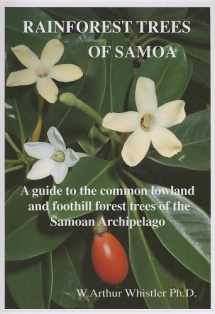
Rainforest Trees of Samoa: A Guide to the Common Lowland and Foothill Forest Trees of the Samoan Archipelago
Book details
Summary
Description
The Samoan archipelago is divided politically into a western portion known as Samoa (formerly known as Western Samoa) and an eastern portion known as American Samoa. Extensive south Pacific rain forests comprising several hundred species of native trees occur in these volcanic islands in the heart of Polynesia. Rainforest Trees of Samoa is designed to enable the layperson and scientist alike to identify the most common trees (mostly native species, but also the naturalized “alien” species) in the lowland and mid-elevation forest (i.e., the vast majority of trees one is likely to encounter in the Samoan forest). The book is based on the author’s work in Samoa that spans the last three decades.
The information on the species presented (about 140 of them) includes the scientific name, Samoan and English names (if any), synonyms, the botanical family to which the plant belongs, and the range of the species. This is followed by the habitat, ethnobotanical uses in Samoa, and a complete botanical description, including a condensed “Distinguishing Characters.” Each species is covered by one to four color photographs of the leaves, fruits, and flowers to aid in the identification of the tree. In addition, a botanical key is presented that can aid in determining the identity of any unknown species. A table is provided that shows the island distribution of each of the species within the Samoan archipelago. Also included are a bibliography of pertinent literature and a glossary of botanical terms.
The book is 210 pages long, and includes 228 color photos. It is designed to be of use to foresters, botanists, naturalists, teachers, students, or just nature lovers who visit the archipelago. It is also a very useful guide to the trees of Tonga, Niue, and the Cook Islands, since most of the species covered also occur in these archipelagos and islands. Also included are six tree species that are new to science (two of them from Tonga).


We would LOVE it if you could help us and other readers by reviewing the book
Book review



